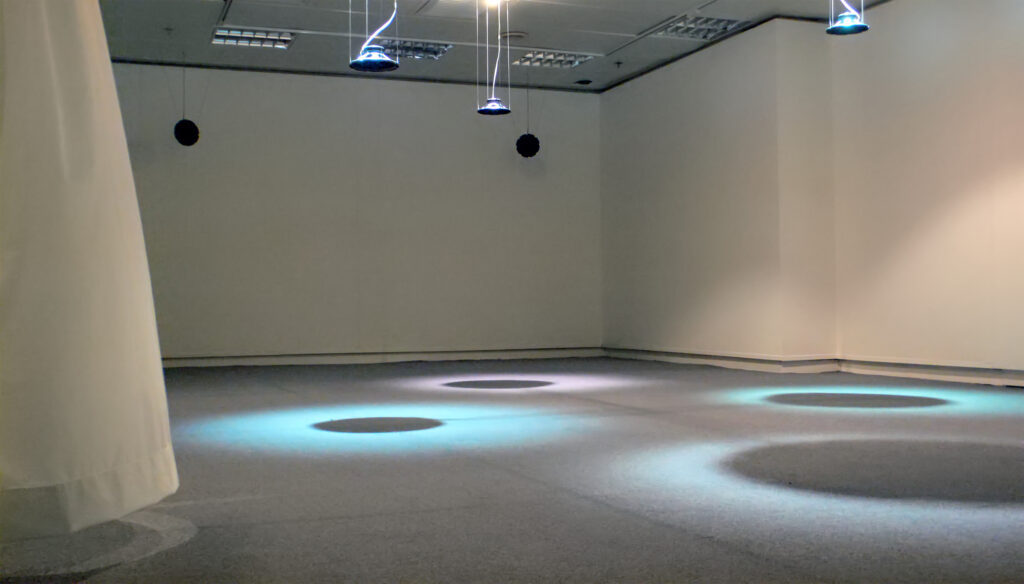real-time sound installation
Exhibition Hall, Hong Kong Visual Arts Centre
10.11 – 20.11 2006
Housing the Hong Kong Visual Arts Centre, Hong Kong Park features different simulated ecosystems, such as the aviary and the Forsgate Conservatory. Through the park’s pounds and cascades, water, acts as the connecting element, establishing a structure encompassing the different biotopes. The fabricated aspect of the various ecosystems recreated in the park echoes the artificiality of the air-flowing system created inside the building of the Hong Kong Visual Arts Centre. Developed to bring comfort and to ensure high air quality independent from the outside climate, air-conditioning systems in buildings are artificial air management devices to renew and clean the air from carbon dioxide emitted by humans, and pollutants generated from furniture and the building. Such a setting gives form to the idea of a closed space, and of the building as an autonomous entity. On a physical level, air can be linked together with the concept of fluidity, and can be also seen as the quality of space on a phenomenological level. On an aural level, the air-conditioning system is a constituting element of the urban soundscape as described in Murray Schafer’s acoustic ecology. This site-specific sound installation focuses on the sounds of the artificial air management within the Centre and aims at creating a sonic interface between indoor/outdoor spaces, and the audience. A dynamic generative system sensitive to initial conditions is implemented through the use of the Lorenz attractor. This set of equations is derived from a simplified model of the convection flow of air, a process that takes place in the atmosphere. Sonic and spatial variations are mapped according to outside air quality indicators such as temperature and humidity, as well as the listener’s presence functioning as air-processing bodies. Through the motion tracking system, not only the number of people can be counted, the movement, and zones of density within the space, can be translated into variables, which define turbulence and sonic motions in the room. Sounds are fed in real-time by the condenser and compressor of the air-conditioning generating room, and from an air vent located at the exhibition hall. The machines from the basement, together with their resulting sonorous output in the exhibition space, can all be heard simultaneously, echoing the actual sound events, such as the constant hums from the air-exhausting vents occurring in the exhibition space. The ceiling speakers, which are used in this installation, serve as a common way to diffuse music in public spaces, or Muzak, functioning as a way to mask noises and shape the experience of space in daily life. It adds another layer to the actual sounds from the air-conditioning of the room, thus, altering the perception of the actual and diffused sounds, and changing the aural situation of the space. Sounds are not heavily processed, so they retain their fundamental qualities. However, both air- exhausting vents and speakers articulate a new definition of the space, which interact with the building through its reverberation qualities. With small alterations and motions, sounds activate different micro-spaces, and propose a fluctuating perception of space, emphasizing the essential question of consciousness of one’s situation within a space. The result is a sonic experimentation through the setting of a hybrid ecosystem, which focuses on the idea of breathing as a transformation process, and new topologies between architecture and its environment. Within this framework, the audience does not only become an essential parameter, but also listeners who experience the created sonic space. I/O Flows is thus an experimental action, as John Cage defined as “an action the outcome of which is not foreseen.”
